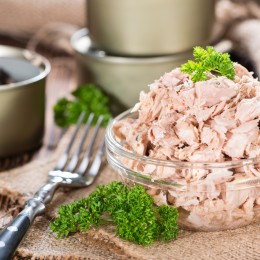How Much is Too Much Fish for Pregnant Women?

By now, most people know that eating fish during pregnancy is an important way for women to consume enough Omega-3 fatty acids for a healthy pregnancy. Since some types of fish contain high levels of mercury, which can counteract the health benefits of omega-3s, the U.S. Food and Drug Administration and Environmental Protection Agency’s draft guidance on mercury in fish advises pregnant women to choose seafood that’s both low in mercury and high in omega-3s.
That’s sensible, science-based advice. Yet, the Environmental Working Group (the same group that wants you to think twice about using sunscreen) is taking issue with the federal government’s recommendations.
Today, EWG released a new report, “U.S. Fish Advice May Expose Babies to Too Much Mercury,” arguing the FDA’s draft advice on fish consumption for pregnant women may lead women to expose their unborn children to dangerous levels of mercury. That argument is nonsense, and here’s why:
- EWG’s primary assertion is that the FDA doesn’t properly advise women about which species of fish are low in mercury. However, the EPA and FDA’s draft guidance explicitly states women should “Eat 8 to 12 ounces of a variety of fish* each week from choices that are lower in mercury,” and “Many of the most commonly eaten fish are lower in mercury. These include salmon, shrimp, pollock, tuna (light canned), tilapia, catfish, and cod.” The FDA even includes a handy chart detailing both the estimated Omega-3 Fatty Acid content and mercury levels of the most popular varieties of seafood.
EWG also takes issue with the FDA’s listing of canned tuna as a low-mercury option. But advising women not to eat canned tuna isn’t necessary:
- Canned tuna is an excellent source of protein and Omega-3 fatty acids—and it’s among the most cost-effective sources of seafood Omega-3s for pregnant women. As David Katz, MD, director of the Yale University Prevention Research Center told TIME the health benefits of canned tuna outweigh potential risks and stated: “All studies comparing the inclusion versus the exclusion of fish show better health associated with the inclusion of fish in the diet. Those contaminants are unfortunate—but that’s the reality in a world we haven’t treated all that well. Perfectly ‘pure’ food no longer exists on this planet.”
- Studies and surveys of canned light tuna’s mercury content consistently find it contains lower levels of mercury than high-mercury fish.
- The FDA draft advice states, “Canned light tuna is fine to eat because it is not high in methylmercury, but we recommend that you eat a variety of fish, including at least some fish that are even lower in mercury. You may wish to try other affordable fish lower in mercury such as other types of canned fish, frozen fish, or fresh fish that are on sale.”
The FDA and EPA make it clear that women should consume a variety of low-mercury, high-Omega 3 fish varieties during their pregnancy. EWG’s attempt to scare women about mercury levels in fish with its new report may needlessly discourage women from getting the much-needed nutrients they need for a healthy pregnancy.





